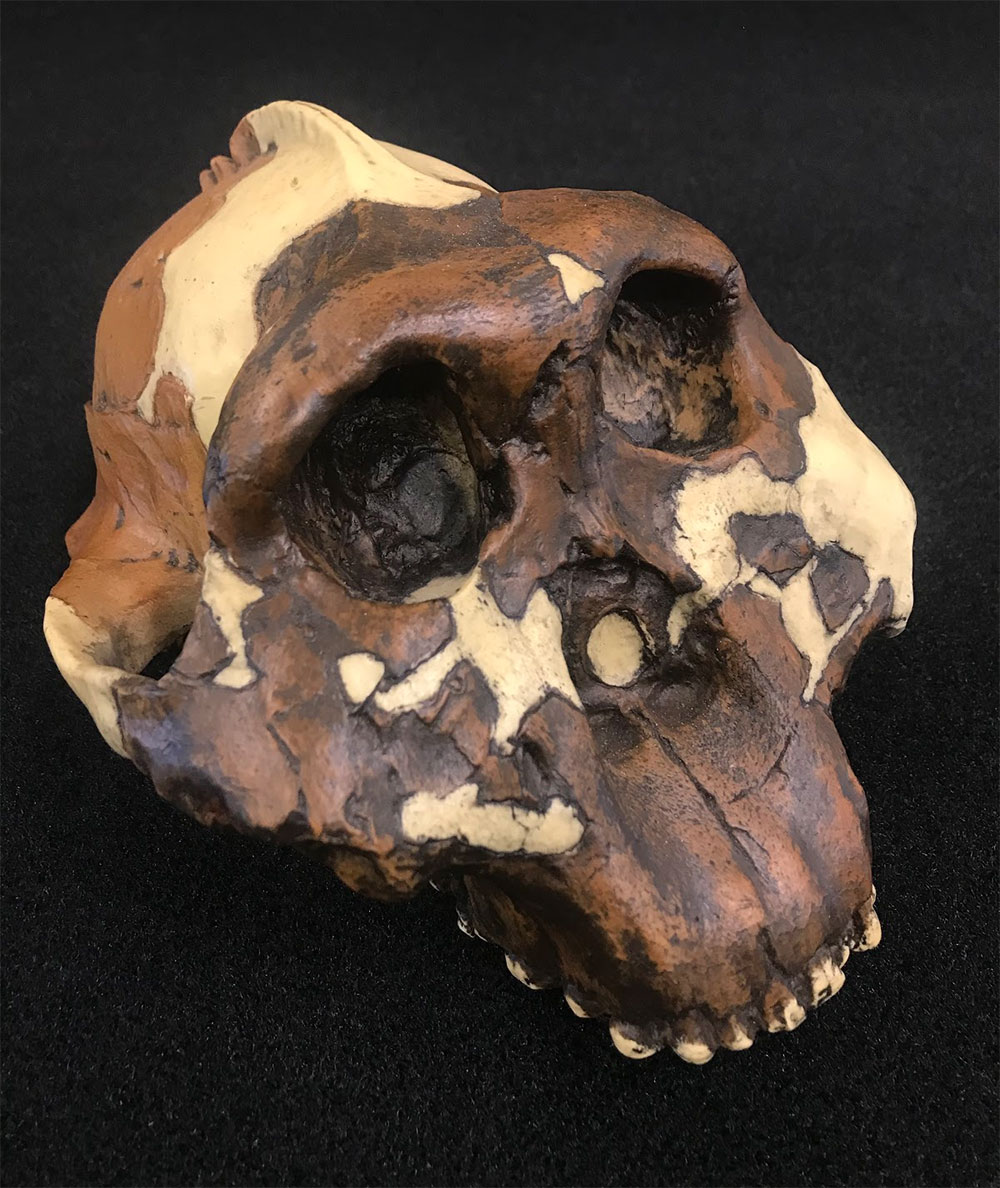Paranthropus boisei
Originally known as Zinjanthropus - 1.8 Million Years Ago


This Paranthropus boisei skull is the most famous fossil from Olduvai Gorge, Tanzania. OH 5 was discovered by Mary Leakey in 1959 and originally classified as Zinjanthropus boisei by L. Leakey in Nature later that year. The accepted genus name has since changed to Paranthropus but is also known by the genus name Australopithecus. This discovery spurred paleoanthropology toward a modern, multidisciplinary approach, and focused paleoanthropologists' attention on East Africa. Unique in hominin evolution, P. boisei's massive skull features a wide, concave face, enormous, flat molars (about four times as big as modern H. sapiens), and cranial adaptations for powerful chewing, hence its nickname, Nutcracker Man. Note the sagittal crest and extremely large area for muscle attachments on the zygomatic arch. The thick jaw allowed for the species' exceptional chewing capabilities. Cranial capacity of this individual is 530 cc.
Read more Australian Museum's Paranthropus boisei
- Hominin Skulls - Select a Species
- Ardipithecus kadabba
- Ardipithecus ramidus
- Australopithecus afarensis
- Australopithecus africanus
- Australopithecus anamensis
- Australopithecus garhi
- Australopithecus sediba
- Denisovans
- Homo antecessor
- Homo erectus
- Homo floresiensis
- Homo habilis
- Homo heidelbergensis
- Homo naledi
- Homo neanderthalensis
- Homo rudolfensis
- Homo sapiens
- Kenyanthropus platyops
- Ororrin tugenensis
- Paranthropus aethiopicus
- Paranthropus boisei
- Paranthropus robustus
- Sahelanthropus tchadensis

